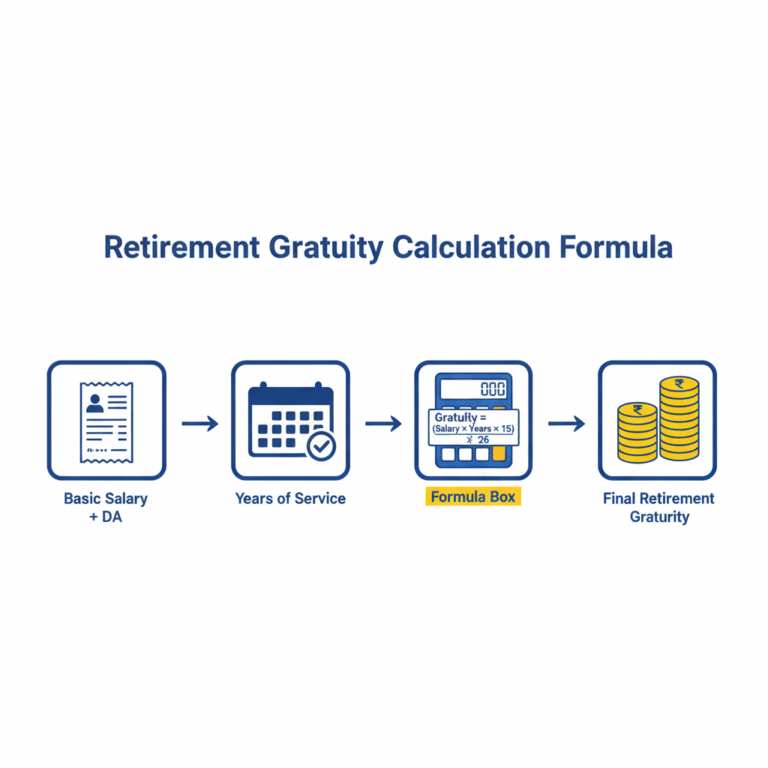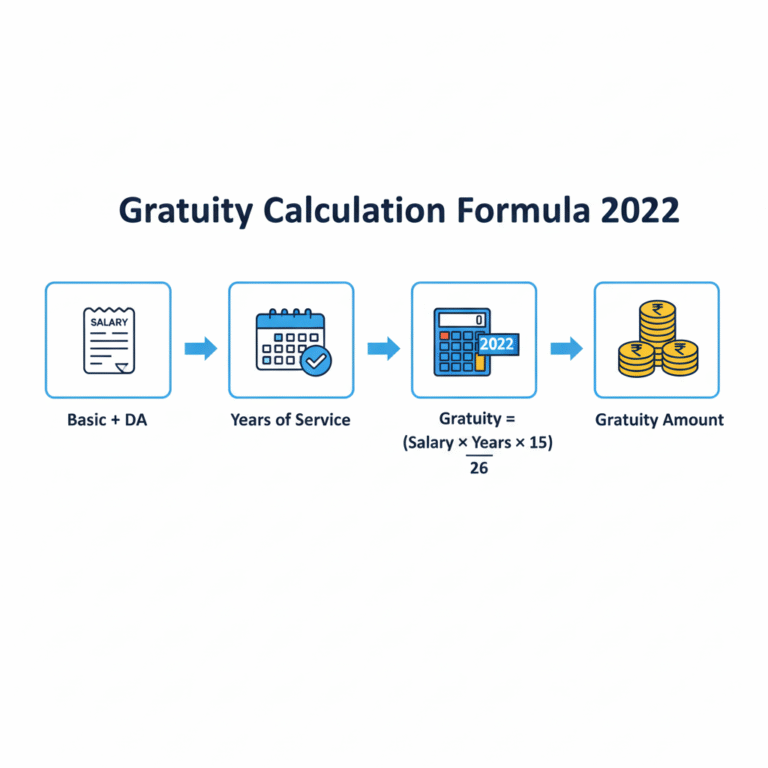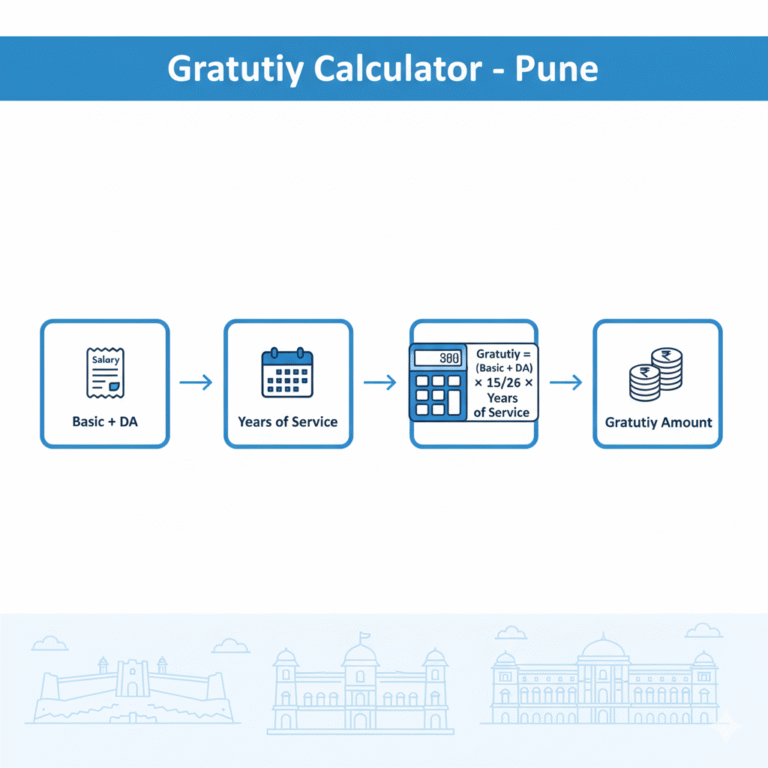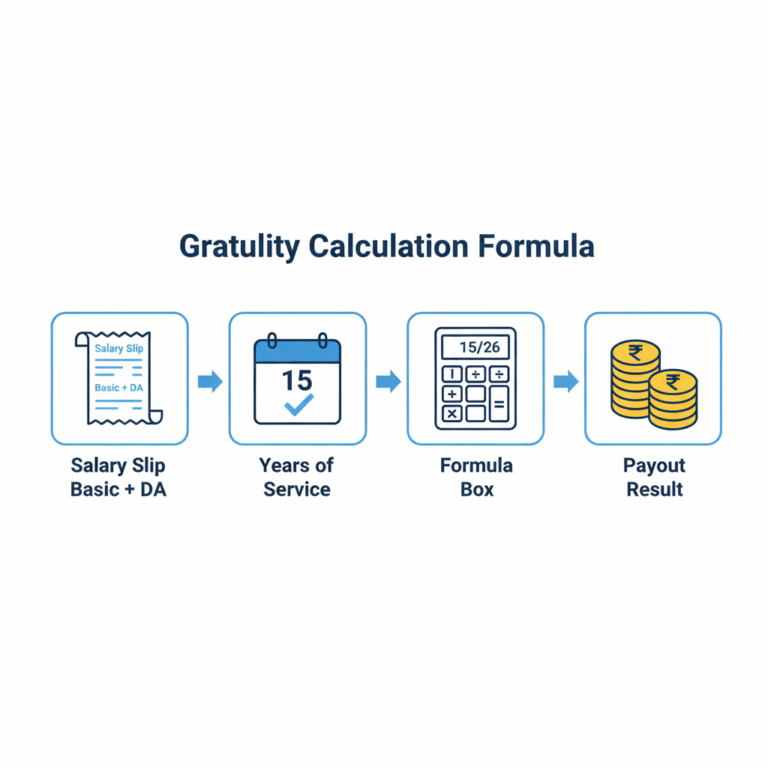How to calculate gratuity forHow to Calculate Gratuity for Private Sector Employees – Step-by-Step Guide private sector employees: a complete, guide
how to calculate gratuity for private sector employees is a vital component of an employee’s end-of-service entitlements. Whether you’re an HR professional, payroll specialist, or a private sector employee planning your finances, understanding how to calculate gratuity for private sector employees the formula, eligible pay components, treatment across jurisdictions, tax implications, and practical examples — helps you avoid mistakes and ensures fair treatment. This guide explains step-by-step how to compute gratuity, with worked examples and checklists you can use immediately.
What is gratuity and why it matters
Gratuity (often called end-of-service benefit, terminal benefit or retirement gratuity) is a lump-sum payment made by an employer to an employee as a token of appreciation for long service. It’s not the same as severance pay, redundancy pay, or pension contributions, though all of these are related to departure and retirement planning. Gratuity:
- Rewards loyalty and continuous service.
- Provides a financial cushion at retirement, resignation, or termination.
- Can be statutory (mandated by law) or contractual (provided under company policy or employment contract).
Understanding how how to calculate gratuity for private sector employees is computed matters because small differences in the formula (which salary components are included, how a year is counted, caps and pro-rata rules) can materially change the payout.
Key terms you should know
Use these terms while reading the calculations and examples below:
- Last drawn salary: Commonly the basic salary plus dearness allowance (if applicable). Some countries use basic only.
- Completed year of service: A full 12-month period; many statutes treat part years differently (e.g., pro-rata or rounded).
- Pro-rata entitlement: Payment proportionate to months or days worked if the final year isn’t complete.
- Cap / ceiling: A legal or company cap that limits maximum how to calculate gratuity for private sector employees per employee.
- End-of-service benefit: A generic term that can incorporate gratuity, severance, or other departure payments.
The universal blueprint (a simple, jurisdiction-neutral view)
While rules vary by country, mosthow to calculate gratuity for private sector employees share the same building blocks:
- Identify the pay base (basic salary, sometimes plus dearness allowance).
- Determine the rate or days-per-year (commonly 15 days’ salary per year in several statutes; some Gulf countries use 21/30 days or 30/30).
- Multiply the daily or monthly base by the number of applicable years of service.
- Apply any reductions (for resignation before a threshold) or increases (for long service).
- Respect statutory caps and tax rules.
This blueprint keeps the approach consistent across different legal systems and helps you adapt the numbers to local formulas.
Common formulas used worldwide
Below are representative formulas used in several large private-sector jurisdictions. These are the typical approaches you’ll encounter; I’ll provide worked examples later.
India (Payment of Gratuity Act approach — typical private sector method)
A commonly used formula is:
Gratuity = (Last drawn salary × 15/26) × Number of completed years of service
Here, last drawn salary usually equals basic salary + dearness allowance (DA), 15 represents 15 days’ salary for each year, and 26 is the assumed number of working days in a month (for covered employers). There is typically a minimum service requirement (e.g., five years) and a statutory cap on the gratuity amount. ICICI DirectQuikchex
UAE and many Gulf states (end-of-service gratuity)
The UAE model calculates gratuity on the basic wage and usually uses:
- 21 days’ basic salary for each year of service for the first 5 years, and
- 30 days’ basic salary for each additional year after 5 years.
There are reductions for employees who resign before completing specified minimum service thresholds. For authoritative guidance see the UAE government site and related calculators. UAE Government PortalGulf News
Pakistan (common private-sector practice)
Many Pakistani employers calculate gratuity using last drawn salary divided by a standard divisor (often 26) multiplied by years of service — or pay an agreed number of weeks’ salary depending on tenure (for example, 12 weeks after five years, 24 weeks after ten). Local rules and company policies differ, so check the employment contract and national labour rules. paycheck.pkVista Outsourcing
Note: These formulas are representative. Always confirm the exact statutory wording and company policy in the country where the employment was held.
Eligibility: who gets gratuity?
Eligibility varies by jurisdiction and contract. Typical considerations:
- Minimum service: Some laws require a minimum continuous service period (e.g., five years in many systems) before statutory gratuity is payable; some employers still offer pro-rata gratuity for shorter service.
- Type of termination: Retirement, resignation, death, or termination might be treated differently (e.g., some systems reduce gratuity on resignation).
- Contract vs statute: Where a statute exists, it sets minimums — contracts can be more generous but not less.
- Employee categories: Temporary, fixed-term, piece-rate, and casual workers might be excluded or treated separately.
If you’re in HR, always read the governing employment law and your organization’s policies; where the law is silent, the employment contract governs.
Step-by-step calculation process (practical method you can follow today)
This section gives a practical method you can apply in any jurisdiction after substituting the local formula.
- Gather facts: last drawn basic salary, dearness allowance (if applicable), date of joining, date of leaving, any unpaid leave days, and the contract terms regarding gratuity.
- Confirm the pay base: Determine which components of pay are included (basic, DA, allowances).
- Count completed years of service: Follow statute/company policy rules for rounding or pro-rata treatment.
- Apply the local rate: Insert the years and salary into the jurisdiction’s formula (e.g., 15/26 for some countries; 21/30 + 30/30 for Gulf states).
- Adjust for special cases: Reduce or increase the entitlement if rules require (resignation reductions, enhanced rates for long service).
- Apply caps and tax rules: Respect statutory caps and determine taxability or exemptions.
- Document and communicate: Provide the employee with a clear breakdown: base pay, years, formula, gross gratuity, deductions, net payable.
This workflow avoids guesswork and helps you produce auditable how to calculate gratuity for private sector employees computations.
Example calculations (worked examples, calculated step-by-step)
Below are three practical examples showing how the typical formulas are applied. I calculate every arithmetic step to ensure accuracy.
Example 1 — India (typical Payment of how to calculate gratuity for private sector employees Act style)
Assumptions:
- Last drawn salary (Basic + DA) = ₹45,000 per month.
- Completed years of service = 12 years.
- Formula used = Last drawn salary × 15/26 × Years.
Step-by-step:
- Compute 15/26 of the monthly salary: first calculate daily equivalent using the 26 divisor basis.
- 15/26 = 0.57692307692 (approx).
- Multiply by last drawn salary:
- 0.57692307692 × ₹45,000 = ₹25,961.538461 (rounded as payroll practice dictates usually to nearest rupee).
- Multiply by years of service (12):
- ₹25,961.538461 × 12 = ₹311,538.4615.
- Final how to calculate gratuity for private sector employees (rounded) = ₹311,538.
Note: Statutory cap limits and rounding rules may apply; always compare against the current statutory ceiling. ICICI DirectQuikchex
Example 2 — UAE (end-of-service benefit basic example)
Assumptions:
- Basic salary = AED 8,000 per month.
- Service = 7 years (so first 5 years at 21 days/year; remaining 2 years at 30 days/year).
- Daily wage convention = monthly basic ÷ 30.
Step-by-step:
- Daily wage = AED 8,000 ÷ 30 = AED 266.6667.
- Entitlement for first 5 years = 21 days × 5 years × daily wage = 21 × 5 × AED 266.6667 = 105 × AED 266.6667 = AED 28,000.
- Entitlement for remaining 2 years = 30 days × 2 years × daily wage = 60 × AED 266.6667 = AED 16,000.
- Total how to calculate gratuity for private sector employees = AED 28,000 + AED 16,000 = AED 44,000.
If the employee resigned before completing minimum service thresholds, the entitlement could be reduced as per local rules. UAE Government PortalGulf News
Example 3 — Pakistan (illustrative approach)
Assumptions:
- Last drawn gross salary = PKR 120,000 per month (includes regular allowances).
- Completed service = 8 years.
- Company follows formula: (Last drawn salary ÷ 26) × 30 × Years (a common local convention) — but note practices vary.
Step-by-step:
- Last drawn salary ÷ 26 = PKR 4,615.384615.
- Multiply by 30 = PKR 138,461.53845 (monthly equivalent under divisor practice).
- Multiply by years of service (8) = PKR 1,107,692.3076.
- Rounded gratuity = PKR 1,107,692.
Because local practice and statutory rules can differ, confirm the exact formula applicable to the employer/sector. paycheck.pkVista Outsourcing
Common pitfalls and how to avoid them
Even small errors can produce disputes. Avoid these frequent mistakes:
- Including the wrong salary components: Check whether allowances (housing, transport) are included. Many laws use basic salary only.
- Wrong divisor: Using 30 vs 26 changes the per-day rate; confirm the statutory divisor.
- Rounding inconsistently: Have a clear rounding rule (nearest rupee/dinar/rupee, or rounding up monthly).
- Ignoring caps: If a statutory cap exists, compute the raw how to calculate gratuity for private sector employees then apply the cap (or treat the excess as ex-gratia).
- Ignoring absence without pay or disciplinary deductions: Many laws exclude unpaid leave days from the service calculation or allow deduction from the final payment.
- Misreading contract terms: A contract can be more generous than statute — always honour the contract when it’s better for the employee.
Document the calculation and the legal basis clearly in payroll records; that avoids disputes later.
Employer obligations and best payroll practices
Employers should:
- Maintain accurate join and leave records, including approved unpaid leave.
- Keep payroll records showing the last drawn salary components and how they were calculated.
- Publish the company how to calculate gratuity for private sector employees policy and ensure it’s consistent with the law.
- Provide a detailed breakup to the employee at the time of payment.
- If you use a cap, explain whether any excess is paid as ex-gratia and how it’s taxed.
From a payroll controls perspective, a standardized gratuity calculation module in payroll software (with configurable rules for country, divisor, rates and caps) eliminates errors.
Taxation and deductions — what to expect
Tax treatment of gratuity varies widely:
- Some jurisdictions exempt statutory gratuity up to a threshold.
- Others tax the entire how to calculate gratuity for private sector employees as ordinary income or offer partial exemptions.
- Deductions for outstanding loans or advances are commonly permitted.
Always check local tax guidance or consult a tax professional to determine withholding requirements and whether the gratuity is taxable, tax-free up to a limit, or taxed as salary.
Documentation an employee should collect when claiming gratuity
Employees should keep the following:
- Employment contract and any amendments.
- Payslips for the last 3–6 months (to verify last drawn salary).
- Service certificate or appointment letter showing date of joining.
- Any communications about unpaid leave or disciplinary actions.
- Final settlement statement from the employer with a line-by-line calculation.
A clear paper trail helps speed up claims and prevents misunderstandings.
Handling disputes: what to do if the calculation looks wrong
If the employee believes the gratuity paid is incorrect:
- Request a formal calculation breakdown from the employer.
- Compare the breakdown with your contract and statutory formula.
- If differences remain, raise a written grievance with HR.
- If unresolved, seek advice from a labour lawyer or the statutory labour authority — many countries have quick complaint mechanisms for end-of-service disputes.
Keeping written records and copies of payslips strengthens your case.
Template: a compact how to calculate gratuity for private sector employees calculation example you can reuse
Below is a simple template you can copy into a payroll sheet:
- Employee name:
- Last drawn basic (and DA if applicable):
- Date of joining:
- Date of leaving:
- Completed years of service:
- Formula used:
- Raw gratuity calculation:
- Cap applied:
- Deductions (loans, advances):
- Net gratuity payable:
- Notes (statutory reference / contract clause):
Use this template to produce auditable, standard payouts.
Variations by employment type and special circumstances
- Fixed-term contracts: Sometimes gratuity is pro-rata or as per contract; in many places fixed-term employees are entitled if they complete the term.
- Death or disability: Many systems accelerate payment or remove minimum service requirements.
- Collective bargaining agreements: Union agreements can alter or enhance gratuity entitlements.
- Cross-border employees: Look at the law where the employment is governed and any cross-border tax treaties.
Gratuity vs severance pay: understanding the difference
Gratuity and severance are related but distinct:
- Gratuity: Usually a loyalty reward tied to years of service and sometimes mandated by statute for retirement/resignation.
- Severance: Typically paid in layoffs, redundancies, or retrenchments and may be calculated differently (e.g., fixed weeks’ pay per year served).
Both can coexist; always make sure you understand which entitlement applies in a given exit scenario. The Economic Times
Quick checklist for HR when processing gratuity
- Confirm last drawn salary components.
- Verify continuous service and any unpaid leave days.
- Apply correct formula and divisor (26 vs 30).
- Check statutory caps and company policy for more generous treatment.
- Prepare and share a full breakdown with the employee.
- Process final payments and ensure tax compliance.
Frequently asked questions (FAQ)
Final thoughts and next steps
Gratuity is a critical, often misunderstood component of final settlements. The core to accurate gratuity computation is clarity: identify the correct pay base, count the years correctly, apply the jurisdiction’s prescribed formula, and always check caps and tax rules. For HR and payroll teams, automating the calculation with configurable rules reduces risk and improves transparency. For employees, maintaining payslips and employment records is the best protection.
If you’d like, I can:
- Provide a downloadable payroll spreadsheet template that implements the 15/26 and 21/30 rules and lets you swap divisors and caps; or
- Generate 3–5 short sample resignation/retirement letters that ask HR for a full gratuity breakdown; or
- Produce a one-page checklist for auditors.
Tell me which of those you want and I’ll generate it immediately.
Sources and further reading (key references)
- Typical gratuity calculation and 15/26 explanation (India). ICICI DirectQuikchex
- UAE (official guidance on end-of-service benefits and calculation conventions). UAE Government PortalGulf News
- Pakistan gratuity practice and calculation references. paycheck.pkVista Outsourcing
- Differences between gratuity and severance (overview). The Economic Times








